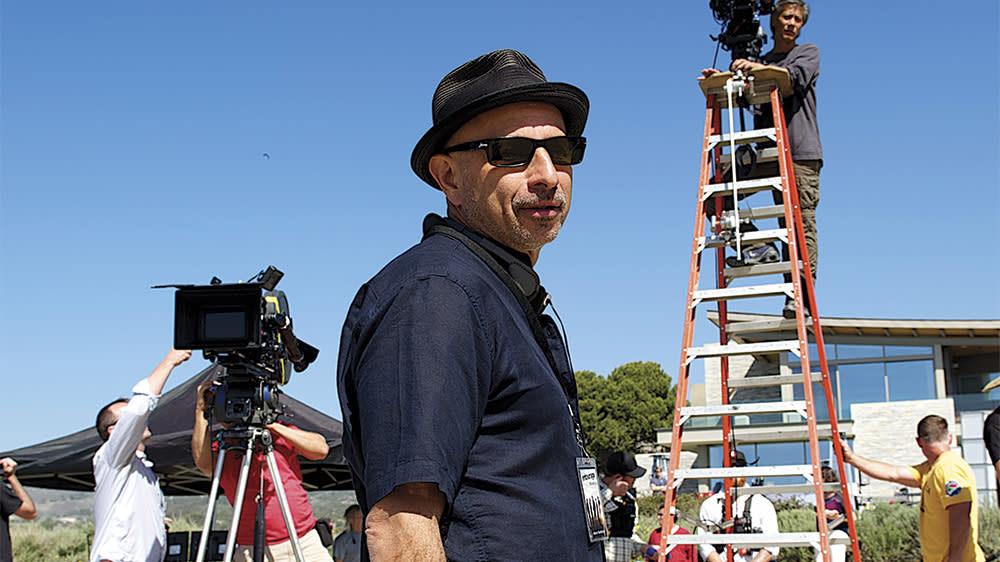‘Entourage’ Cinematographer Tasked With the Bigscreen Tweaks

Of all the TV shows that hold a mirror up to Hollywood, nothing beats the 96 episodes of HBO’s “Entourage,” which ran for eight seasons until 2011 and reflecting the full range of Tinseltown’s egos and foibles.
On June 3, Warner Bros. will release the bigscreen version, which offers the five main actors of the TV ensembler — Adam Grenier, Kevin Connolly, Jerry Ferrara, Kevin Dillon and Jeremy Piven — and an even bigger canvas on which to reprise their characters.
And Doug Ellin — creator, writer, exec producer and occasional director of the HBO show — returns in all those roles on the feature.
With two properties so similar, how much did Ellin want to differentiate the movie from the series? Not so much, it turns out. “You know, the two are pretty similar,” he says. “We had a little extra time on the movie, and tried to make it as cinematic as possible. But then, we always tried to make the TV show as cinematic as possible as well.”
For example, says Ellin, even as he was creating the series, he used a lot of wide shots, which are more characteristic of features than they are of the smallscreen. “We’d have to battle the network on that,” he recalls. “Our feeling when we started (in 2004) is that TV’s are getting bigger. We were known for doing these four-shots of the guys in the same frame.”
Framing aside, cinematographer Steven Fierberg (pictured above) saw to it that the two projects would have a different look. He was d.p. on the first 25 episodes of the series. Ellin brought him back for the movie.
Fierberg shot both projects on 35mm film with Arri cameras. For TV, he “pushed” the film’s exposure, which resulted in more grain, thus “more emotional connection with the actors.” He didn’t do that for the movie.
“The small screen of television needed help to ‘feel’ the grain,” says Fierberg, “especially in the days of standard def, which the TV series was originally shown in. The bigger (movie) screen doesn’t need help. You see it without pushing.”
Another major difference: The HBO series was shot almost entirely hand-held, resulting in a kinetic, quasi-documentary look. The movie relied mostly on smoother dolly shots, with some Steadicam work by camera operator Scott Sakamoto.
Fierberg adds that although the handheld look was a signature of the show, he got “bored” with it. “Maybe it was cool 10 years ago, but I thought we should do something different,” he explains. “I talked to Doug about it, and for the movie, we practically never handheld the camera.”
Haunted by the “if it ain’t broke, don’t fix it” syndrome, Fierberg admits he agonized over the changes. “I would wake up in the middle of the night,” he recalls. “Was I screwing up? But I needed to change something. It would have been bad creatively to go through it like a formula.”
The director and d.p. also paid special attention to the lighting. “Doug wanted to show the truth about things in Hollywood,” Fierberg says. “So the lighting is meant to look very real, like we didn’t light it at all. You should never watch a movie and think, ‘Oh, that’s really well lit.’ You should think, ‘That’s what it really looks like.’ So the movie is lit to look like it isn’t.”
Related stories
Doug Ellin and Cast Reunite for 'Entourage' New York Screening
'Entourage' Movie Gets Summer 2015 Release Date
Get more from Variety and Variety411: Follow us on Twitter, Facebook, Newsletter
